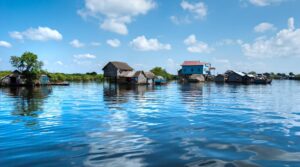WGF Report 5: Vulnerability reduction and portfolio approach
The latest IPCC Assessment Report (AR5) provides evidence that the impacts of climate change are strongest and most comprehensive for hydrological systems. At the same time, there is a huge gap between adaptation needs and the uptake of adaptation actions or programmes.
This paper discusses the use of two key aspects in assessing effective water adaptation options: vulnerability reduction as an alternative effectiveness criterion and a portfolio approach to ensure the robustness of water adaptation options against uncertainties.
One of the identified issues for the slow uptake of funds for adaptation measures is the difficulty in assessing adaptation effectiveness. Another challenge in developing water adaptation options is tackling the issue of uncertainties, which arise from both climatic factors (the extent of temperature increase and its impacts on fresh water resources across regions) and non-climatic factors (e.g. scenarios on population growth, economic growth, changing lifestyle and their effects on water demand). Effective adaptation options should perform well under plausible uncertainty scenarios.
This paper explores the use of vulnerability reduction as a key effectiveness criterion to assess water adaptation investments. This means that effective water adaptation options are measured against how much they reduce the vulnerability level of the affected community.
Citation+
UNDP-SIWI Water Governance Facility. 2015. Vulnerability Reduction and Portfolio Approach: Key Aspects for Assessing Effective Water Adaptation Options in the Face of Uncertainties. WGF Report No. 5. Stockholm: SIWI.



